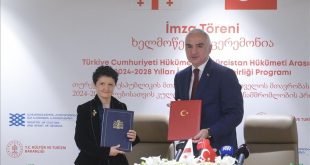Introduction
The research paper aims to study the place of religious symbols in modern Azerbaijan Higher education system as a secular state in Leyla Shahin case and to answer the questions: “What will happen if Leyla Shahin studies in one of Azerbaijan state universities? What is a legal base of education-religion relation in public education system in Azerbaijan?” I narrow down my paper with state universities. Azerbaijan is a country with more than 9 million people. Although 95% of population is Muslims in Azerbaijan, Christianity, Judaism and some other religions are also exercised; each religion has denominations and most of them has different customs, worships, and religious symbols. As these religions have been established through many years, they impacted each other. In such a multi-religious society, there are more than 131,000 people who study in nearly 35 state universities of Azerbaijan.[1] The diverse and complicated nature of religious background requires analyzing the place of religious symbols at universities. To find answers to the aforementioned questions, first, we need to understand “religion”, “education”, “state-religion relations” and to know “Sahin vs Turkey” case and the legal aspects of the case.
Concept of religion
To define the religion we need to explain two approaches: philosophical and legal aspects of religion. Philosophical definition of religion says that, it is a pervasive feature of and powerful force in human life. Religion has a great influence on religious people and believers’ beliefs, behavior. Ayer defines religious belief and statements as metaphysical thought of humans.[2] Although they explain religion differently, they agree on that, human beings and belief are two fundamental elements of religion and all existed religions require these two elements.The history of this relationship between religions and these two elements comes from ancient times. [3] According to Kant, religion is recognition of all duties as divine commands. Unlike the philosophical definition of religion, legal definition has been a debatable topic in the international sphere. However, it is defined in section 10 of Equality Act (EA 2010), and the act gives following definition to religion and belief:
- Religion means any religion and a reference to religion includes a reference to a lack of religion.
- Belief means any religious or philosophical belief and a reference to belief includes s reference to a lack of belief. [4]
Concept of Education
Education-an essential part of pedagogical method is learning process of knowledge, skills, beliefs and values through discussion, studying, research or teaching. The aim of education is to prepare specialist in different spheres. Education is given and provided at different stages and levels. Education system is the sum of all educational-learning institutions in the country. It includes all level education; from kindergarten to academies.
To establish education system is one of the aims of state. State had an interest to provide citizens with public education for three reasons. First, education makes a person more productive, as their productivity increases overall efficiency increases. Secondly, every state wants to have better citizens in the sense of being intelligent and knowledgeable voters. Good citizenship means that, citizens are informed about public issues and they participate actively in the political issues. Thirdly, educated person socialize and do not engage in antisocial behavior. Education promotes tolerance toward other religions, ethics and economic background among people.[5] This approach is similar to Kantian philosophy. For Kant, education is a formation process which includes care, discipline and instruction. Education makes man a human.[6]
As my research area includes state universities of Azerbaijan I analyze formal education system as universities fall under this category. Formal education is classroom-based; systematized, structured by a formal curriculum, leads to a formally recognized credential or a grade, and is often guided and recognized by government at some level. Trained and professionals teachers provide formal education.
There are more than 30 public state universities registered in Azerbaijan, and they have more than 131,000 students. The number of students increases the importance of the research on the wearing of religious symbols in public universities.
State-religion relation
Rex Ahdar distinguishes three state-religion relation is his “Religious Freedom in Liberal State” book: Monism; Cooperation and Separation.[7] Monism has two types; the first one is theocracy in which religion controls the state; second is Erastianism in which state controls religions. Cooperation relation between state and religion means that they collaborate with each other, state support religious boards financially and religious boards provides the state religious-ethical sense. This model has de jure and de facto types. In de jure cooperationist model a specific religion is identified and promoted in the state. In de facto model, one specific religion is favored to others; state gives dominant place to this religion. State announce off days of this religious holidays and so on. Separationist mode is used in secular states. Religion and state are separated from each other, and religion has no impact on public affairs.
Leyla Sahin vs. Turkey
Leyla Shahin case is about the medical student of Cerrahpasha faculty of Istanbul University who accused of wearing headscarf while attending lectures and classes.
Leyla Shahin comes from a religious family who practices Islam as a religious belief by wearing headscarf. She was born in Vienna in 1973. She left Vienna in 1992 and went to Turkey to continue her medical education. Leyla Shahin has studied five years in medical faculty of Bursa University. After spending five years at Bursa University she was accepted to Cerrahpasha medical faculty of Istanbul University. At both universities she continued to practice her religion by wearing headscarf. However, administrative board of the Istanbul University didn’t stay tolerant toward her right to freedom of religion. Beginning from February 1998, Vice Chancellor of Istanbul University gave an announcement about the students dress code that “students whose heads are covered (headscarf) and students with beard should not be allowed to attend lectures and classes. Consequently, name of those students should not be added to lists of registered students.”[8] After the circular of Vice Chancellor, Leyla Shahin was not allowed to enter her written examination on oncology because of wearing headscarf. Afterward, the same circumstances repeated with her neurology lecture and other exams.
Finally, Leyla Shahin applied to the court in July, 1998 against the administrative board of Istanbul University. In her application to the court, she referred to the Article 9 of Convention, claiming that by wearing headscarf she was only performing her religious belief toward Islam. Leyla Shahin was referring to the Students Disciplinary Procedure Rules in her application that in the procedure rules headscarf is not shown as an offensive symbol for others’ beliefs. However, Istanbul Administrative Court dismissed the applicant application supporting the Vice Chancellor that the executive organ of the University has a power to regulate student’s dress in order to sustain the state’s secularism principle at the university.
After Court’s decision Leyla Shahin returned back to Vienna and continued her education there. Despite all that happened in 2004 Leyla Shahin went to European Court of Human Rights. She submitted her application to the court claiming that ban toward wearing headscarf by institutions of higher education violates her right to freedom of religion as stated in Article 9 of the Convention. Paragraph one of the Article 9 states that:
“Everyone has the right to freedom of thought, conscience and religion; this right includes freedom to change his religion or belief and freedom, either alone or in community with others and in public or private, to manifest his religion or belief, in worship, teaching, practice and observance.”
However, Grand Chamber of the ECHR had concluded that there was no violation of Article 9 of the Convention. Decision of the court stated that the right to freedom of religion does not always protect to wear a headscarf. Chamber concluded that second paragraph of Article 9 Convention puts limitations to the right of manifestation of religious beliefs in order not to bother and rape others’ religious beliefs. Article 9 (2) states:
“Freedom to manifest one’s religion or beliefs shall be subject only to such limitations as are prescribed by law and are necessary in a democratic society in the interests of public safety, for the protection of public order, health or morals, or for the protection of the rights and freedoms of others.”
State-religion relation in Azerbaijan
The diverse characteristics of historical path, geographical location and the diversity in ethical groups led to the existence of different religions in Azerbaijan. Although there are various religious beliefs, Islam is the dominant and 95% of population is Muslim in Azerbaijan. [9] All religions have a deep root in Azerbaijan: Judaism started spreading 5th b.c., the history of Christianity began in the 1st century and Islam spread in the 7th century. All these wide-spread religions and some other religious movements have impacts on each other. Presently there are 510 religious communities registered in Azerbaijan and only 32 of them are non-Islamic religious communities.[10] The regulatory body of the religious issue is State Committee of Religious Affairs of the Republic of Azerbaijan. The committee regulates and controls religious communities on obeying to legislation on religious affair boards in the territory of the Republic of Azerbaijan.
In the 7th article of the constitution of the Republic of Azerbaijan says that Azerbaijan is democratic, legal, secular, unitary republic. The following clauses explain secularism in the constitution of Republic of Azerbaijan:
- No religion is preferred to others in the Republic of Azerbaijan, which means no religion is defined as a state religion or obligatory religion in the state.
- All religious bodies are separated from state and they all are equal before the state in the Republic of Azerbaijan.
There are four stages in the history of secularization in Azerbaijan. The first period covers 19th century when Russian invaders occupy Azerbaijan; the second period begins with the collapse of Russian Empire of the Tzars and creating of two years Azerbaijan Democratic Republic. The third phase includes Soviet invasion time till the fourth period which begins with the regaining independence of Azerbaijan.[11] Each period has own features and legal implications that had effective impacts on secularization process in Azerbaijan. During the first and second period of secularization 942 elementary schools and 32 high schools were built by 1915 with the Russian and European influence on education, numerous political newspapers were published in Azeri and Russian in Azerbaijan. The third stage had stronger impacts on secularization as Soviet Empire tried to spread atheism in all allied countries and bring “social equality” to the society.[12] New constitution which was accepted in the fourth period after the regaining independence stated that religion should be separate from the state and all religions equal before the law.
Article 48 of the Constitution of the Republic of Azerbaijan says that, everyone has the right to freedom of conscience. This article is similar to the Article 9 of the European Convention on Human rights and includes: 1)to exercise a religion; 2) to worship a religion; 3) to change a religion; 4) not to believe any religion; 5) to propagandize atheism; 6) to involve in charity; 7) to create religious organization; 8) to propagandize his/her religion; 9) to function religious educational-cultural activities; 10) to be equal before law without considering his/her attitude to religion.[13]
As aforementioned, article 7 of the constitution of the Republic of Azerbaijan provides that Azerbaijan is a secular state. And in secular states separationist model of state-religion relation is used. In terms of legal aspects, Azerbaijan has separationist model, however in practice Azerbaijan uses cooperationist model of state-religion relation. This relation is shown on the government support to religious boards, institutions, especially in respect Muslim communities. Haci Allahshukur Pashazadeh, the head of Caucasus Muslim Board, attends to all official and governmental events, ceremonies. Pashazadeh takes some official trip with the president of the Republic of Azerbaijan; stands in the same line with the president during ceremonies. Pahsazadeh also accepts representatives of foreign countries and has meeting with ministers, advocators, official persons of other countries.[14] All these show that he has an essential role in public spheres, and he may have impacts on political issues. Moreover, some Islamic holidays such as Ramazan, Qurban are celebrated, and off-days related to these holidays are announced in Azerbaijan because most of population is Muslim. These factors prove the existence of cooperationist model rather than the separationist model in Azerbaijan.
What is a place of the religious symbol in such controversial state-religion relation? To find the answer to this question we need to analyze the laws of Azerbaijan related to this issue.
Religion is separated from the state, all religions are equal before the law, to propagate and promote religions humiliating the human personality, which is contrary to the principles of humanity, is prohibited and public education system is secular in Azerbaijan according to article 18 of the Constitution of the Republic of Azerbaijan. Article 3 of the law on Education and article 6 of law on Freedom Religious Belief mention the secularity of education in Azerbaijan. According to decree on “State standards and programs (curriculum) of general Education” by Cabmin Curriculum of schools should be adjusted to the secularity principles of constitution.[15] Here, a question comes to my mind which there is no direct law on this issue: “Does the secularity of education mean prohibit wearing religious symbols to universities?” There is only article (1.8) about wearing rules at universities on “Exemplary regulation of Higher Education Institutions” which says, dressing rules is defined by the internal regulation of each university.[16] However if we analyze all laws together, I would conclude that a person is free to wear religious symbols at the universities because the constitution of Azerbaijan and the law on “Freedom of Religious Belief” guarantee the right of each person on attitude to religion and its expression and the right to exercise the same right. Moreover, although Azerbaijan is a secular state, in reality state corporates with religion, especially Islam as most of people is Muslims in Azerbaijan. It would not be right to use entirely a separationist model in every sphere without considering most people’s belief.
BY: Aygun Gurbanli
[1] http://www.stat.gov.az/source/education/ (last visited: 22.12.2014)
[2] Oppy Graham, Michael Scott. Philosophy of religion. (2010. Willey-Blackwell) pp. 1-11.
[3] Ibadov Rashad. Defining Religion. P 3
[4] Howard Erica. Law and the Wearing of Religious Symbols. (2012.Routledge). P 9.
[5] Mueller, D.C.. Reason, Religion, Democracy. (2009), pp. 317-323
[6] Ibadov, Rashad. Education: The Concept, Aims and Types of Education. P 3.
[7] Ahdar, Rex. Religious Freedom in Liberal State. 2005
[8] Leyla Shahin v. Turkey Judgement, p 3
[9] http://www.azerbaijans.com/content_499_az.html (last visited: 21.12.2014)
[10] http://www.azerbaijans.com/content_499_az.html (last visited: 21.12.2014)
[11] Ibadov Rashad. Religious education in Azerbaijan.
[12] Ibadov Rashad. Religious Education in Azerbaijan.
[13] Jafarov,I. Commentary of the Constitution of the Republic of Azerbaijan. 2004. P 148.
[14] http://www.qafqazislam.com/az/xeberler.php (last visited: 22.12.2014)
[15] http://www.cabmin.gov.az/?/az/pressreliz/view/329/ (last visited: 22.12.2014)
[16] http://vn.taxes.gov.az/1/legal/nizamname/ali.pdf (last visited: 23..2014)
 Oval Useful news from Azerbaijan and Caucasus
Oval Useful news from Azerbaijan and Caucasus


